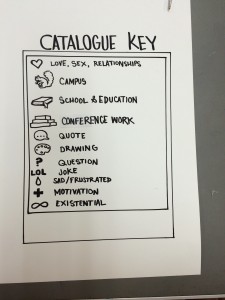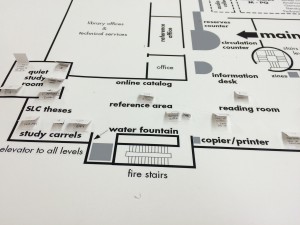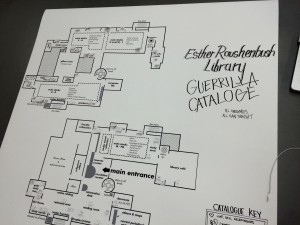For my conference project, I collected and catalogued all of the graffiti in the library. Each of these pieces was separated into one of eleven categories: Love/Sex/Relationships, Campus Life, Existentialism School & Education, Conference Work, Quotes, Drawings, Questions, Jokes, Sadness/Frustration, and Motivation.
The purpose of this project was to give a critical appreciation for these small, anonymous acts of vandalism. I thought a good way to do that would be to catalogue them similarly to the library’s system. While at face value, they’re funny quips, cries of desperation and exhaustion from work, and divulged secrets are just the ramblings of twenty-something liberal arts students, I think there’s something more here. Even though they were technically defacing the library, the level of intimacy in most of these felt more like reading snippets of a diary than the words of someone with the intent to destroy property.
A lot of the pieces were in conversation with each other. It seemed like an act in intimate expression, but also in bonding. I think this is one of the most special components of this project. This is a community of anonymous authors, speaking to no one or anyone, and engaging in a dialogue. Sometimes it’s witty banter, but often its words of encouragement; a number of these notes said “You can do it!”. I felt a special connection to each space. There’s also a strangeness to reading a conversation which is not logged and sort of presently happening, yet totally silent and without any sense of timing. It feels very alive and present.
My intention was to connect this project back to the lessons we had learned on psychogeography, but giving people a new way of navigating the space through this alternate, guerrilla catalogue. It’s subversive and enticing, or as one anonymous author wrote “I’ve never done this before and it feels way better than I expected”. So it’s a catalogue that invites interaction and contribution. This also reminded me of the Situationists International, through the way they marked their city as a way of redefining the space. The Situationists also showed how they could challenge the dominant power structure through small acts of vandalism like this. I see a lot of similarity in these small pieces of writing challenging the power structure of the library, and its catalogue of thoughts. It subverts the nature of needing to be published in order to have a presence in the library.
Ideally, the best placement for this piece would be in the library, next to the guide on the wall. Although, I didn’t notice a spatial connection between the writings and the collections of books they were near, I think placing this map next to these stacks might subtly suggest or encourage someone to write something existential near the philosophy section or something.





